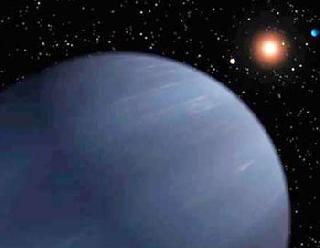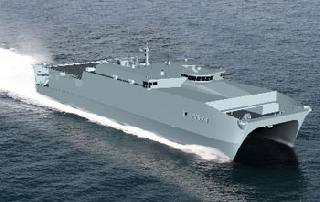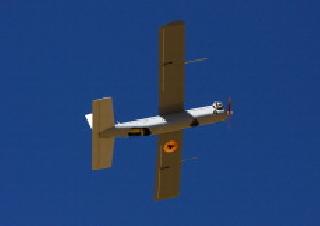
An artist's rendering shows the newly found planet. Photo:NASA
WASHINGTON (AP): Astronomers say they have for the first time spotted a planet beyond Earth in what is sometimes called the Goldilocks zone for life: where crucial conditions for life to exist are just right.
Not too far from its star, not too close. So it could contain liquid water. The planet itself is neither too big nor too small for the proper surface, gravity and atmosphere.
It is just right. Just like Earth.
"This really is the first Goldilocks planet," said co-discoverer R Paul Butler of the Carnegie Institution of Washington.
The new planet sits directly in the middle of what astronomers refer to as the habitable zone, unlike any of the nearly 500 other planets astronomers have found outside Earth's solar system. It also is in Earth's galactic neighbourhood, suggesting that plenty of Earth-like planets circle other stars.
Finding a planet that could potentially support life is a major step toward answering the timeless question: Are we alone?
Scientists have jumped the gun before on proclaiming that planets outside Earth's solar system were habitable only to have them turn out to be not quite so conducive to life.
This one, however, is so clearly in the right zone that five outside astronomers told The Associated Press it seems to be the real thing.
"This is the first one I'm truly excited about," said Penn State University's Jim Kasting. He said this planet is a "pretty prime candidate" for harbouring life.
Life on other planets does not mean ET. Even a simple single-cell bacteria or the equivalent of shower mold would shake perceptions about the uniqueness of life on Earth.
But there remain many unanswered questions about this strange planet. It is about three times the mass of Earth, slightly larger in width and much closer to its star -- 14 million miles away versus 93 million. It is so close to its version of the sun that it orbits every 37 days. And it does not rotate much, so one side is almost always bright, the other dark.
Temperatures can be as hot as 71 Celsius or as frigid as minus 4 Celsius below zero, but in between - in the land of constant sunrise - it would be "shirt-sleeve weather," said co-discoverer Steven Vogt of the University of California at Santa Cruz.
It is unknown whether water exists on the planet, and what kind of atmosphere it has. Because conditions are ideal for liquid water, however, and because there always seems to be life on Earth where there is water, Vogt believes "that chances for life on this planet are 100 per cent."
The astronomers' findings are being published in Astrophysical Journal and were announced by the National Science Foundation on Wednesday.
 Previous Article
Previous Article Next Article
Next Article












The Indian Air Force, in its flight trials evaluation report submitted before the Defence Ministry l..
view articleAn insight into the Medium Multi-Role Combat Aircraft competition...
view articleSky enthusiasts can now spot the International Space Station (ISS) commanded by Indian-American astr..
view article